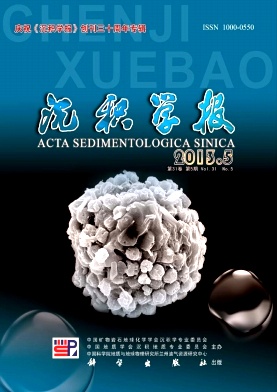Geochemical Characteristics and Genetic Mechanism of Permian Dolomitic Clastic Rocks in Northwestern Junggar Basin
- Publish Date: 2013-10-10
-
Key words:
- Junggar Basin /
- Permian /
- dolomitic clastic rocks /
- geochemical characteristics /
- genetic mechanism
Abstract: The types and lithology characters of Permian dolomitic clastic rocks in northwestern Junggar Basin are investigated by means of petrologic analysis, Xray indentification, carbon and oxygen isotope geochemistry and element geochemistry analysis, also analyzed Dolomization mechanism, Established dolomitization model. dolomitic clastic rocks in study areas include dolomitic mudstone, dolomitic siltstone, dolomitic tuffaceous siltstone, dolomitic tuffaceous shale,ect. And dolostones which are formed through dolomitization by replacing lacutrine plaster and siliceous (tuffaceous) components mainly consist of powderfine dolomites with automorphic or hypidiomorphic crystals, while residual calcite and late filled calcite cement commonly exist. The ratio of V/ Ni(1.2~4.8)content of Sr(95.5~782.2 μg/g)Mg/Ca(0.5~3.0),the degree of order(0.36~0.98)δ18OPDB(14.8‰~3.2‰)and δ13CPDB(1‰~5.2‰)all have larger variation range. The dolomitic rocks in this area mainly formed in a relatively weak hydrodynamic conditions, deep, peaceful, salt and lowsalt semiclosed terrestrial bay environment, have a characteristic of several stages and various causes. During Permian periods, in the researching zone the tectonics is complex, fault development, subtropical hot climate and frequent volcanic which provide favourable source of Mg2+ and permeability channel for the rich magnesium fluid fast flow. Comprehensive research show that these dolomitic rocks have three kinds of genetic types: Penecontemporaneous dolomitization, buried dolomitization, hydrothermal dolomitization.
| Citation: | Geochemical Characteristics and Genetic Mechanism of Permian Dolomitic Clastic Rocks in Northwestern Junggar Basin[J]. Acta Sedimentologica Sinica, 2013, 31(05): 898-906. |






 DownLoad:
DownLoad: